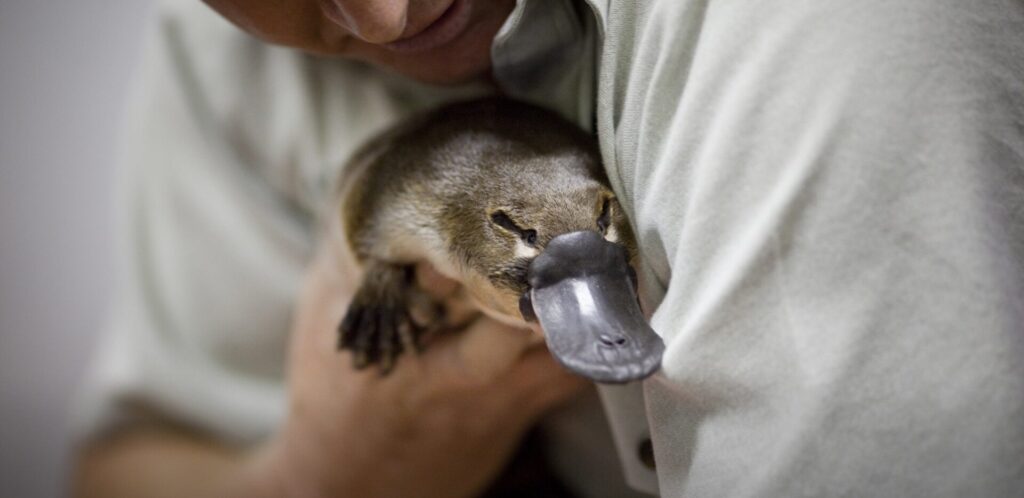
The Platypus: A Duck-Billed Marvel
When you think of a mammal, images of furry creatures with four legs and hair might come to mind. However, the platypus defies conventional expectations. This extraordinary creature, native to eastern Australia, is one of the world’s most unique mammals.

A Blend of Traits
The platypus, scientifically known as Ornithorhynchus anatinus, boasts a distinctive appearance that sets it apart from other mammals. Its flat, rubbery bill resembles a duck’s beak, while its webbed feet and beaver-like tail are perfect for swimming and foraging. But perhaps the most unusual feature is its ability to lay eggs, a trait shared only with echidnas.

Electroreception: A Superpower
One of the platypus’s most remarkable adaptations is its ability to detect prey using electroreception. Its bill houses thousands of tiny sensors that can detect the weak electric fields generated by muscle contractions in aquatic prey. This unique sensory system allows the platypus to hunt in murky waters with ease.
Conservation Status
While the platypus is currently not considered endangered, it faces threats such as habitat loss, water pollution, and climate change. Conservation efforts are underway to protect this iconic Australian animal and ensure its survival for future generations.

The platypus, with its bizarre combination of traits, continues to fascinate scientists and nature enthusiasts alike. Its unique adaptations and evolutionary history make it a symbol of Australia’s rich biodiversity. By understanding and protecting this extraordinary creature, we can help preserve the delicate balance of our planet’s ecosystems.
Want to learn more about the platypus and other fascinating animals? Subscribe to our newsletter for the latest wildlife news and updates.

Leave a Reply